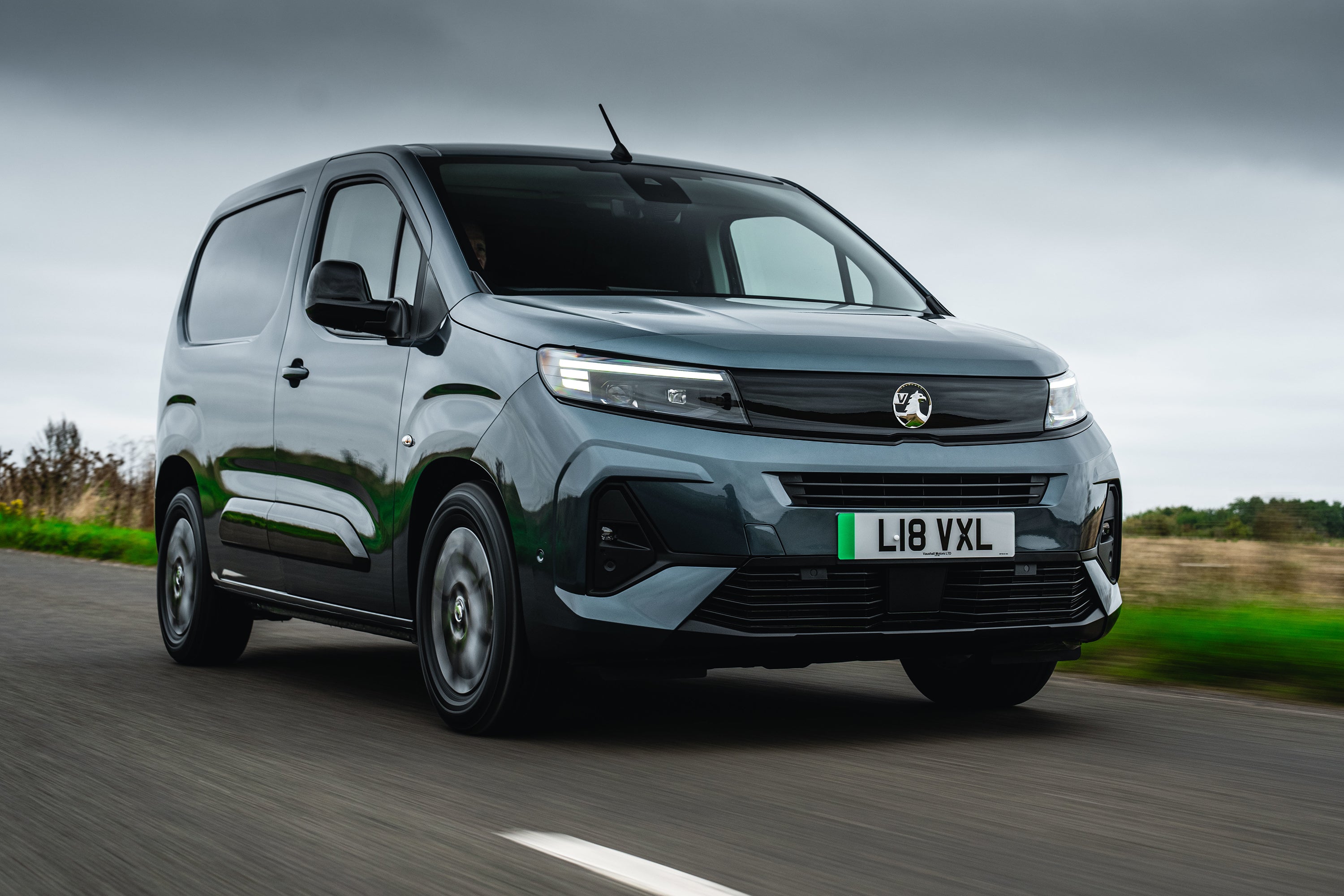Vauxhall Combo Van Review 2025: Price, specs & load capacity
Written by Ivan Aistrop
Quick overview
Pros
- Good figures for payload and load volume
- Clever load-through hatch boosts practicality
- Reasonably comfortable and easy to drive
Cons
- Manual versions need lots of gearchanges
- You really need the more expensive trim level
- Some rivals are better to drive
Overall verdict on the Vauxhall Combo
“The Vauxhall Combo has existed in one form or another since 1986, so these days, it’s an integral part of the modern British van market.”
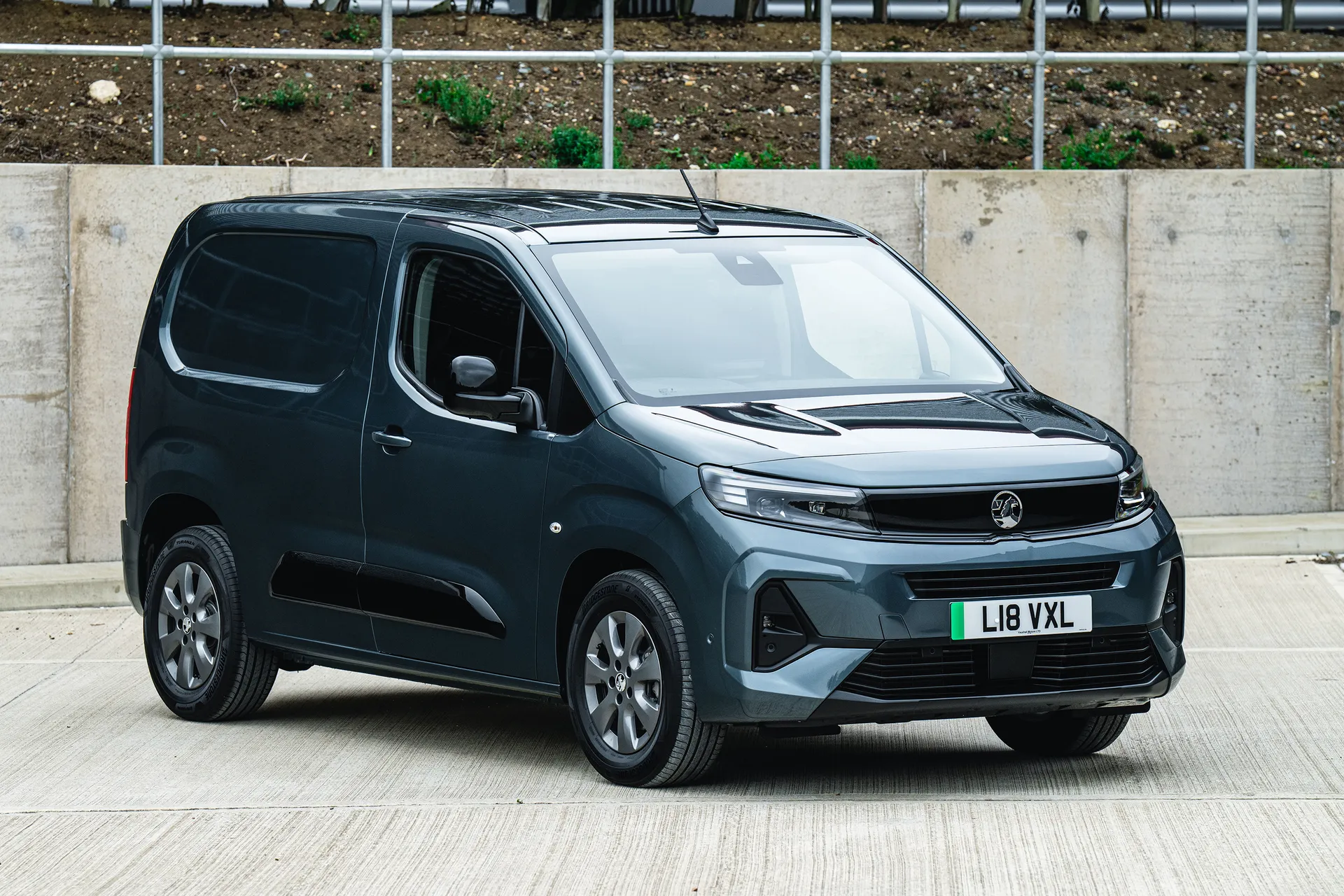
In the early days, it was based on the Corsa supermini, but more recent iterations have shared their bits and bobs with the contemporary Fiat Doblo. That trend continues today, but that’s not the end to it. You see, both Vauxhall and Fiat are now members of the multi-brand automotive manufacturing powerhouse that is Stellantis, along with other van-producing brands in the form of Citroen and Peugeot. So, as well as sharing its oily bits with the Doblo, the Combo also shares them with the Citroen Berlingo and Peugeot Expert.
Like its stablemates, it’s available in a variety of forms. There’s a standard wheelbase version and a longer-wheelbase XL version, while it can also be had as either a conventional panel van or as a Crew Cab with an extra row of seats.
The powertrain options available include a couple of diesel engines and an all-electric version. The Combo posts pretty impressive official figures for payload and load capacity, giving good practicality and making it a popular choice with commercial vehicle customers looking to maximise versatility.
A couple of trim levels are offered. The entry-level Prime version has enough kit for those who don’t need luxury, but the range-topping Pro version does add some very desirable equipment that'll make it worth the upgrade for many.
On the road, the Combo is capable and reasonably comfortable, if not the last word in dynamic excellence, even by the modest standards of other compact commercial vehicles. Importantly, it's easy enough to drive to give you a less stressful working day.
Perhaps more importantly, the Combo looks like decent value for money and has reasonably affordable running costs version-for-version, so it shouldn’t be too much of a drain on the profits of your business. A very cable contender in the compact van class.
Looking for a used van for sale? We've got 100s of Vauxhall Approved Used Cars for Sale for you to choose from, including a wide range of Vauxhall Combo Cargos for sale. Vauxhall also offers an MPV version, if you're interested in that you need our Vauxhall Combo Life review.
Is the Vauxhall Combo right for you?
It is if you need your compact van to have class-leading figures for payload and load capacity, because the Combo - like its sister vans from the Stellantis stable - does particularly well on these compared with most other small vans. Among those related vehicles, it’s the only one to offer the more powerful 130PS diesel engine with a manual gearbox, so if that’s a combination that appeals to you, then the Combo is the one to choose.
What’s the best Vauxhall Combo model/engine to choose?
On the powertrain front, we reckon the best version is either the electric version or the 130PS diesel fitted with the automatic gearbox. That’s because these are relaxing and easy to drive, with reasonable performance and no gearshifts to make. In versions with a diesel engine and a manual gearbox - regardless of whether you choose the 100PS engine or the 130PS version - you need to make seemingly constant gearshifts in order to maintain your pace, which can get a little draining.
In terms of trim level, it’s definitely worth stumping up the extra for the higher-end Pro version. The fold-own passenger seat and load-through hatch that greatly increases your load volume will be justification enough for many, but the upgraded infotainment and additional parking assistance will provide further justification, while the rain-sensing wipers and smarter looks are nice-to-haves.
What other vehicles are similar to the Vauxhall Combo?
Vauxhall is part of a multi-brand automotive manufacturing powerhouse known as Stellantis, and several of the brands in question produce commercial vehicles. And the comparable compact vans from all four - the Vauxhall Combo, Citroen Berlingo, Peugeot Partner and Fiat Doblo - are all mechanically identical to one another, and you can’t get much more similar than that. Even Toyota offers a version in the form of the same vehicle in the form of the Proace City, and that company isn’t even part of Stellantis.
There are plenty of other compact van offerings that aren’t related to the Stellantis bunch, but are similar in size and purpose. These include the Volkswagen Caddy Cargo, Mercedes Citan, Renault Kangoo, Nissan Townstar, Ford Transit Connect, and Ford Transit Courier.
Comfort and design: Vauxhall Combo interior
"There’s plenty of adjustment for the driving position in the Combo: the steering wheel moves up and down, and in and out, while the driver's seat has a plentiful amount of height adjustment, making it easy to find a comfortable position."
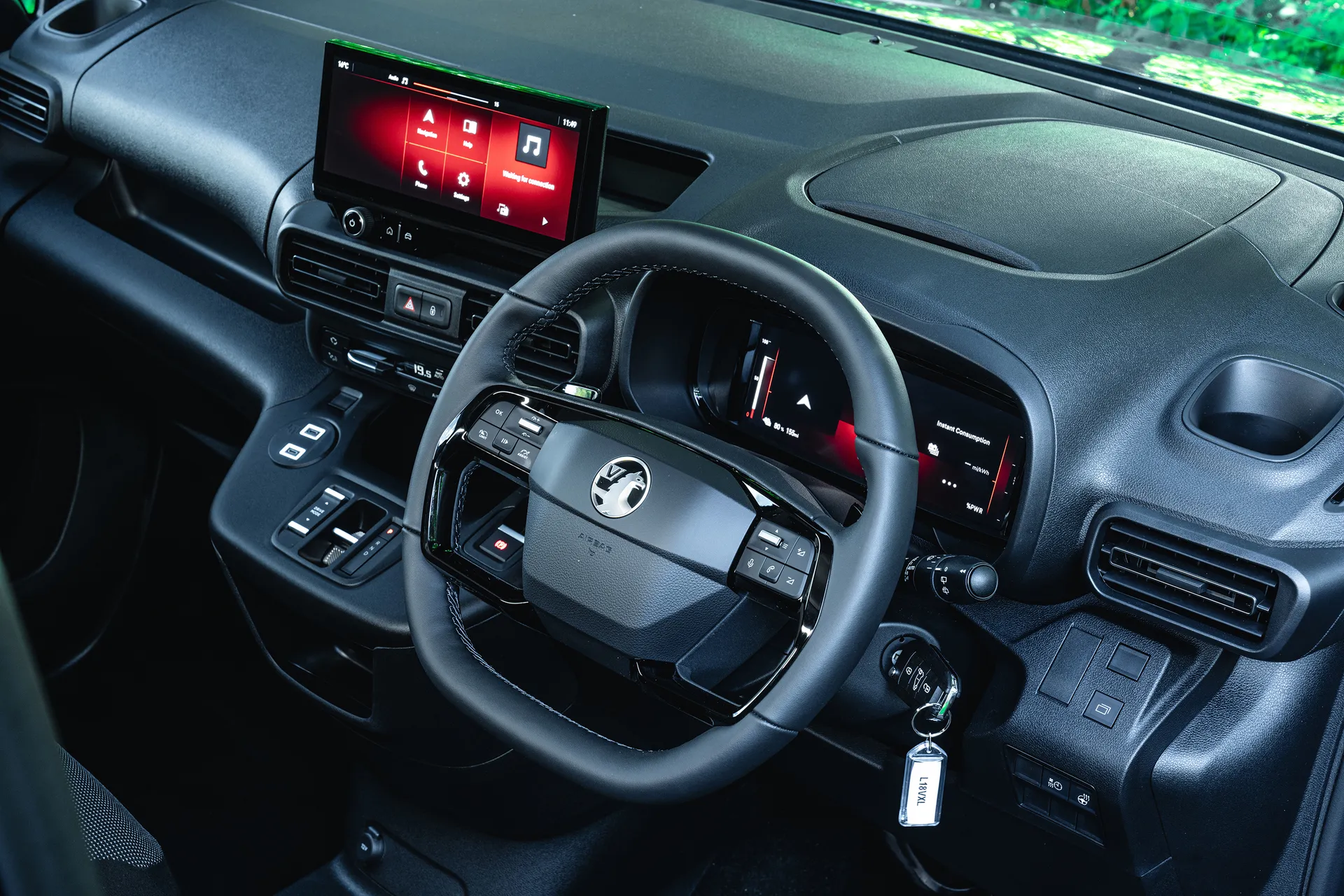
The cabin design is nice and simple, which is refreshing in a modern automotive market that seems to be obsessed with overly complicated touchscreens. There is a central touchscreen on the higher-end Pro trim, but it’s more basic than most, so it’s simpler to use as a result, and many other functions - such as controlling the air-con system - are controlled using fuss-free buttons and switches, and hallelujah for that.
Forward visibility is fine, but the bulkhead behind you obviously means that rear visibility is nowhere near as good rather, being limited in basic versions to what you can see in your rather small door mirrors. At least rear parking sensors are standard.
Higher-spec Pro models, meanwhile, come with a digital rearview mirror that displays a live feed from a rear-facing camera on the back of the van, along with reversing cameras at the back and sides of the vehicle.
Quality and finish
If you’re used to passenger cars rather than commercial vehicles, then the Combo - along with pretty much every other van out there - will feel a bit utilitarian. There’s a very good reason for this: most working vehicles like these concentrate on providing an environment that is hard-wearing and functional, rather than posh-feeling. After all, when your van is undergoing hard daily use, you’d rather have surfaces that will wipe clean and resist scuffs, rather than look nice for five minutes, but will then mark up at the slightest provocation. So, while the hard plastic surfaces you’ll find inside the Combo don’t provide much tactile or visual appeal, they are utterly appropriate.
There is a small difference in ambience between the diesel and electric versions of the Combo, though. We’re not sure of the reason why, but combustion-engined Combos get a plastic floor lining in the passenger cabin, while electric ones have carpet.
Infotainment: Touchscreen, USB, nav and stereo in the Vauxhall Combo
Go for the entry-level Prime version of the Combo, and you’ll get something called a Smartphone Station. This is essentially a cradle for your phone, complete with a USB port and Bluetooth, and you can play music from your device through two integrated speakers. You can also add DAB radio to this setup as a no-cost option, but although it’s free, it’s not classed as standard equipment, so you must remember to specify this when you order otherwise you’ll miss out on this feature.
Upgrade to the higher-end Pro trim level, though, and you get a comprehensively upgraded 10.0-inch central touchscreen infotainment system with full integrated sat-nav, Apple Carplay and Android Auto.
While it has much more functionality than the Smartphone Cradle, it’s still not the most sophisticated infotainment system you’ll ever encounter. However, this simplicity makes it easier to navigate than many such systems: yes, there are a couple of strangely designed menus and some ambiguously designed on-screen icons, but you learn your way around with familiarity.
Pro versions also have a 10.0-inch digital instrument screen behind the steering wheel in place of the traditional instrument dials you get on the basic version. It looks good, and it has a variety of different layouts to choose from. However, most of them present most of the same information, just with slightly different graphical treatments.
Space and practicality: Vauxhall Combo cargo space
The Combo is offered in two different lengths, the standard version being around 4.4 metres long, while the longer XL version is 350mm longer. Precisely 190mm of this extra length sits in the wheelbase, while the rest in the rear overhang.
The width of the load bay between wheel arches is identical in both versions at 1,229mm. The height of the load bay, meanwhile, is 1,200mm in the standard Combo and 1,270mm in the XL. In terms of load bay length, you get 1,817mm in the regular Combo and 2,167mm in XL.
However, if you really want to maximise the cargo-carrying credentials of your Combo, you’ll need the FlexCargo Pack, which is an optional extra on the entry-level Prime trim level, and standard on the higher-spec Pro trim (although it’s not available at all in the Crew Van version). This gives you a fold-down front passenger seat and a load-through bulkhead connecting the cargo bay to the passenger compartment. It extends your maximum load length to 3,090mm in the regular version and 3,440mm in the XL. What’s more, this fancy bulkhead also increases the maximum load capacity of your van: it goes up from 3.3 cubic metres to 3.8 cubic metres in the regular Combo, and from 3.9 cubic metres to 4.4 cubic metres in the XL.
The single-cab models have two front seats in basic Prime form, while higher-spec Pro models have a third ‘jump seat’ in between. The cabin is just about wide enough for three people to squeeze in, but you might be getting a little bit closer to your workmates than you might want to.
A Crew Cab version of the XL is also offered: this has two seats up front and a further three-seat rear bench behind. Inevitably, this comes at the expense of a bit of cargo space. The width between the wheel arches is the same as in the other versions, while the load height stands at 1,243mm. However, with the rear seats in place, the length of your load bay is just 1,450mm, and the load volume stands at just 1.8 cubic metres. You can claw a bit of cargo space back by folding down the rear seats and setting the two-position bulkhead to its forwardmost position, increasing those figures to 2,000mm and 3.5 cubic metres, respectively.
In terms of those all-important payload figures, these differ quite a bit between the diesel-powered versions and the all-electric ones. For the battery-powered Combos, the figures stand at between 759kg and 781kg on the regular version, and between 691kg to 709kg on the XL. The Crew Van’s figure is 642kg.
The diesel versions can haul a little more: between 982kg and 990kg in the standard-length van, and between 927kg and 953kg in the XL, with the Crew Van having a figure of 840kg. All examples have a Gross Vehicle Weight (GVW) of roughly 2.4 tonnes, give or take up to 20kg.
All Combos have twin doors on the back end that give easy access to the load bay, and if you unhook the stoppers on the hinges, these can open to 180 degrees for easier access. The standard-length Combo also has a sliding door on the left-hand side of the van, while the XL gets sliding doors on both sides.
The load floor of the Crew Van variant gets a plastic covering, while in the others, the load bay is bare metal. Alternatively, a wooden floor covering is available as an optional extra. If you want illumination of your load area, though, you’ll have to pay extra in all versions.
Handling and ride quality: What is the Vauxhall Combo like to drive?
"Many van drivers spend large chunks of their working day at the wheel, and as such, the most important driving characteristic will be how comfortable and easy-to-drive their vehicle is.”
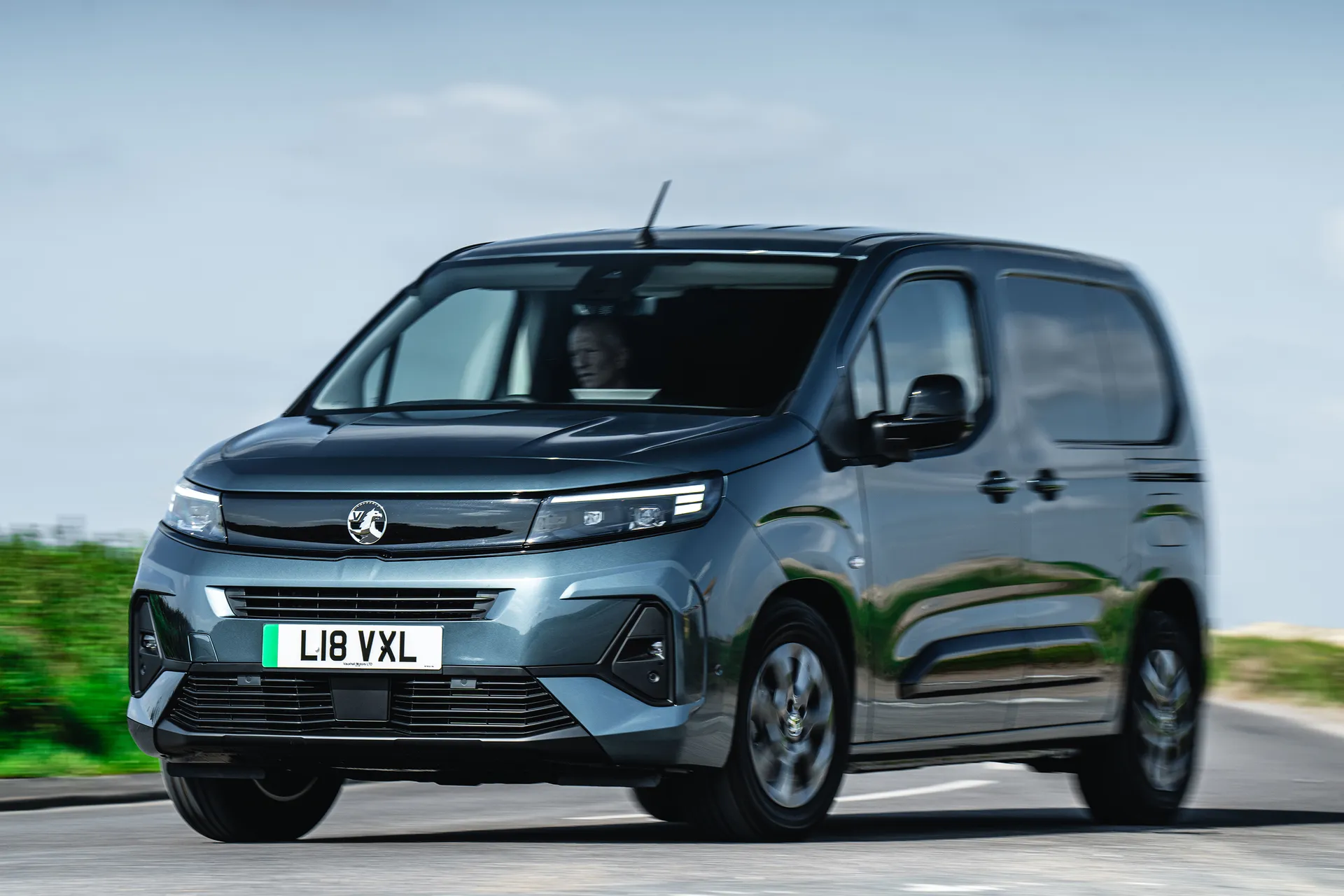
In that regard, the Combo does an entirely reasonable job. As you’d expect, the ride isn’t as settled as it is in your average passenger car, and things can feel especially jumpy when you have an empty load bay, but comfort levels are totally acceptable, especially by the standards of other compact vans.
Handling prowess is obviously far less of a priority, but the Combo does okay here, too. There’s decent grip and solid enough body control, so the vehicle feels secure and stable on all types of road. The steering is very slow and very light, which means it doesn’t feel the most accurate when plotting a course at speed, but the lightness is a big help in urban settings and when manoeuvring, as is the tight turning circle.
Yes, it’s true that rivals such as the Ford Transit Connect and Volkswagen Caddy are slightly more polished on the road, in terms of both ride and handling, but the Combo is by no means outclassed.
What engines and gearboxes are available in the Vauxhall Combo?
Early on in its life, the Combo was available exclusively with four-cylinder diesel engines producing 75PS, 100PS or 130PS. Most of the earliest diesels were 1.6 litres in capacity, but these were quickly replaced with 1.5-litre units of the same output.
In the present day, only the 100PS and 130PS diesel models remain, along with an all-electric version. The 100PS engine comes exclusively with a six-speed manual gearbox, while the 130PS comes with either a six-speed manual or an eight-speed automatic. That’s a little different to all the other compact vans from the Stellantis brands, as in those, this engine is only offered with the auto’ and not the manual.
The entry-level engine delivers predictably pedestrian performance. It’s strong enough to get you up to speed with reasonable ease, but maintaining your speed proves a little bit more troublesome. The engine needs to be doing around 2,000rpm to do its best work, and if the revs drop below that - as they might on a steep incline or if you find yourself slowing down behind traffic - then you find yourself in the power-delivery doldrums, desperately short of go. You’ll need to chop down to a lower gear - several, in many cases - to rebuild your speed, and no matter how many cogs you drop, refinding your pace will take plenty of time. And that’s the case when you have an empty load bay: take on some heavy cargo, and your performance will be even more laboured.
The 130PS engine isn’t much brawnier when fitted with the manual gearbox. It has a fraction more strength in the mid-range, but it shares the weaker engine’s characteristic of low-rev flatness, so it’s not ultimately that much more flexible, and regular downshifts will still be needed to keep pace with traffic. Specifying the automatic gearbox makes life a good bit easier: it never allows the revs to drop below that 2,000rpm threshold, keeping things on the boil, and although the transmission switches gears fairly constantly to maintain your pace, at least those changes are being made by the transmission and not by your left hand.
You don’t have to shift gears in the Combo Electric, either, but that’s because it only has one fixed-ratio gear, rather than an automatic gearbox. It has a 136PS electric motor driving the front wheels, but you’re only served up all of that power if you select the Sport driving mode: select Normal or Eco, and the power level you get becomes progressively lower.
There is an appreciable difference between the modes. Eco mode has enough oomph to cope around town and at lower speeds, but performance is very leisurely, and once the traffic around you is moving at about 50mph or more, or you need more fizz to exploit gaps in traffic, then you’ll need to switch to one of the pokier modes.
Normal mode will be brisk enough for most drivers in most situations: you won’t be getting anywhere in a hurry, but you’ll roll around at a reasonable rate without feeling like you’re getting in anyone’s way. Having a Sport mode feels rather incongruous in a vehicle like the Combo, but the extra squirt of pace it gives does come in handy when pulling away at busy junctions or joining motorways.
Paddles behind the steering wheel let you alter the regenerative braking in three stages: the regen’ harvests energy that would otherwise be lost through deceleration and feeds it back into the battery. In its lightest mode, it feels almost like you’re freewheeling when you lift off the accelerator, while the heaviest mode is almost strong enough to qualify as a one-pedal driving mode, although you won’t come to a complete halt unless you operate the friction brakes. Whatever setting you choose, it’s easy to modulate.
Vauxhall e-Combo electric range: How far can you travel on a charge?
When it first hit the market, the all-electric e-Combo had an official WLTP range figure of around 175 miles, courtesy of its 50kWh battery. That’s not great by the standards of many electric cars, but it’s about par for the course where electric vans are concerned.
When the Combo was facelifted in 2024 - by which time it had also been renamed from e-Combo to Combo Electric - the battery capacity was still given at 50kWh, but improvements to the electric powertrain increased the official range by 38 miles to 213 miles.
Refinement and noise levels
As a dedicated workhorse, you wouldn’t expect the Combo to be an ultra-civilised machine on the road. And it isn’t but it doesn’t do a bad job by any means. Obviously, you hear a lot more from the diesel engines than you do the near-silent electric motor, but most of the time, the clatter they make stays very well suppressed. The engines have to be worked pretty darned hard quite often to maintain your pace, and that results in them becoming more vocal, but the noise seldom gets annoying.
Wind noise is pretty well suppressed, too, even at motorway speeds, so the most prevalent noise you’ll hear in all versions is road noise, but again, this doesn’t usually get to troublesome levels unless the road surface you’re on is particularly grainy. You’ll also hear the odd clunk from the suspension, and the odd creak from the loadbay, but all of this is to be expected in a panel van.
Safety equipment: How safe is the Vauxhall Combo?
The list of standard safety equipment in the Combo includes driver assistance features including automatic emergency braking, intelligent speed limit assistance, lane keep assist, high beam assist, and driver attention alert. Upgrading to the Pro trim level adds an additional pack that includes blind spot detection and a suite of extra parking assistance features.
There is an option pack available that adds adaptive cruise control with a stop-and-go traffic function, along with lane positioning assist. However, it’s only available on electric or automatic versions, and only on the basic Prime version, not on the Pro or Crew Van versions. We’re not entirely sure why.
All versions have driver and passenger airbags, side airbags and curtain airbags, in an effort to help protect occupants in a crash. In the Crew Van, however, airbags are found in the front seats only, and those in the back get no airbag protection.
It sounds positive that the Combo has been awarded the Gold standard in Euro NCAP’s commercial vehicle ratings, although it should be noted that these ratings are more about the fitment and effectiveness of driver assistance systems than they are about crash safety. The Gold standard is the second highest rating there is, behind Platinum. However, this achievement becomes slightly less impressive when you consider that those two standards have been achieved by almost every van that’s ever been assessed: there’s only ever been one Silver award, and never a Bronze or below.
It’s also worth noting that the passenger-carrying version of the Doblo was crash-tested by Euro NCAP’s car programme back in 2018, and earned four out of five stars.
MPG and fuel costs: What does a Vauxhall Combo cost to run?
"Obviously, what you pay to fuel your van will vary tremendously depending on whether you go for the diesel-powered Combo, or the all-electric model."
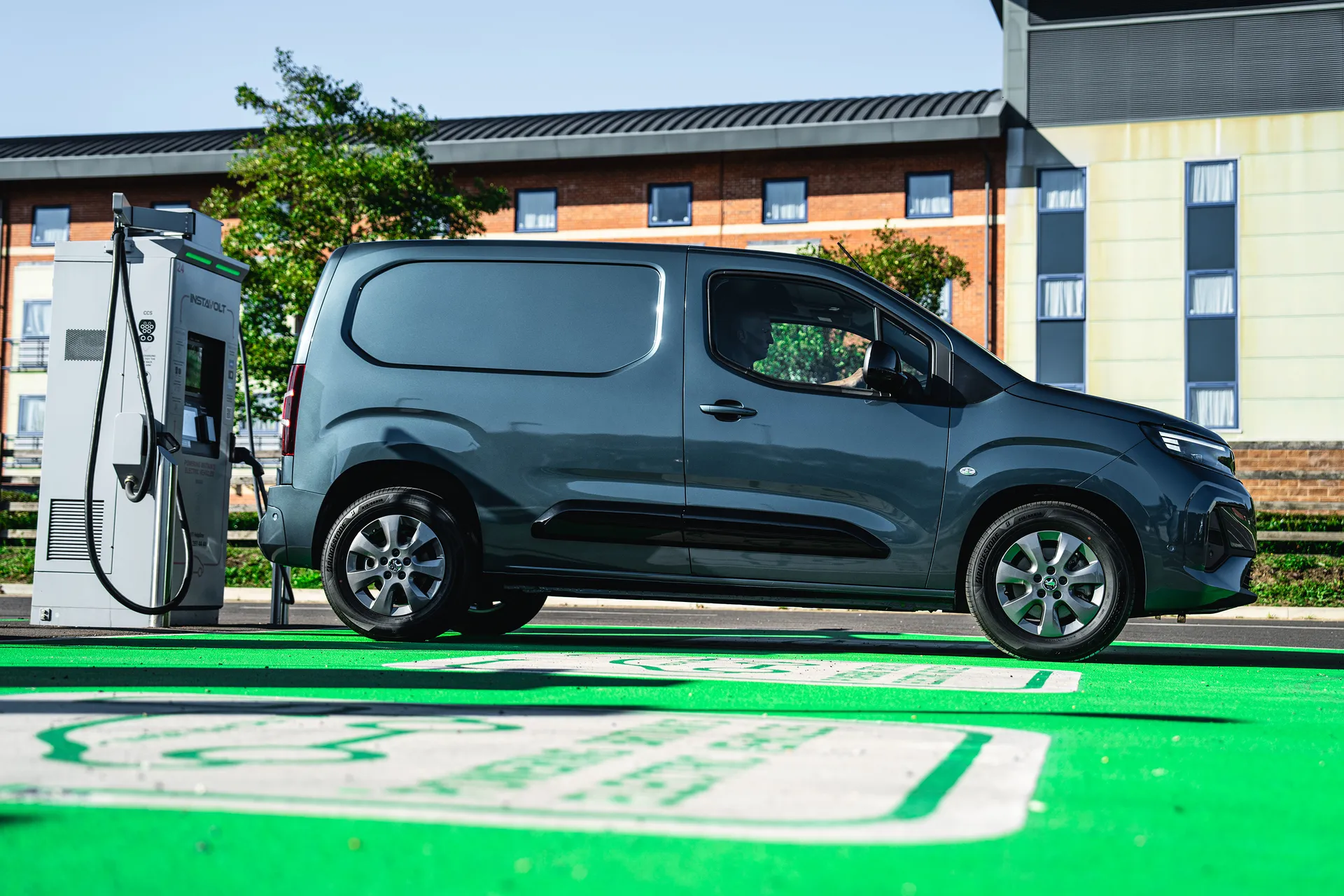
With the diesel models, the official WLTP fuel economy figures say you’ll get up to 54.4mpg from the 100PS engine, and up to 51.9mpg on the 130PS fitted with the automatic gearbox. Choose the one version of the 130PS engine, with the manual gearbox, meanwhile, and the official figures say you’ll get up to 52.5mpg.
Don’t bank on replicating these laboratory-gleaned figures in the real world, though. In reality, expect around 45mpg if you’re gentle, and less if your van is loaded up with heavy cargo.
Vauxhall e-Combo charging times: How much does it cost to charge?
Don’t rely on plugging your Combo Electric into a three-pin domestic socket on a regular basis: it’ll take upwards of 31 hours to take on a full charge, and it’s not particularly good for your home’s electrics. You’ll also have to pay extra for the cable that allows you to do it.
Do as most owners will, and get yourself a dedicated 7.4kW wall box home charger installed, and you’ll refill your battery in around seven and a half hours. Either way, a full charge at home should cost you around £14, assuming that your domestic electricity is billed at the UK’s national average rate. However, if you get yourself on an EV-specific power tariff that allows you to charge overnight at a heavily discounted off-peak rate, then you can easily cut the cost of a charge in half.
The Combo Electric has a maximum DC charging speed of 100kW, and if you can find a powerful enough public rapid charging station that’s running to its full potential, you can take on a 0-80% charge in half an hour. Be prepared to pay around three times the price for electricity delivered that way, though.
Vauxhall Combo reliability and warranty
The HonestJohn.co.uk Satisfaction Index is our go-to source of reliability data for cars, but unfortunately, it’s not much use here because the study doesn’t include vans.
Even so, you might be slightly alarmed to learn that Vauxhall currently languishes at the very foot of the manufacturer’s table for overall customer satisfaction, and that’s out of 29 brands considered.
Don’t panic unduly over reliability, though. The firm didn’t figure on the list of the 10 least reliable manufacturers in the study, which would suggest that buyers’ complaints about their Vauxhalls lay in other areas.
All Combos come with a three-year, 100,000-mile mechanical warranty, while on the electric versions, the battery is covered by an eight-year, 100,000-mile warranty.
Vauxhall Combo insurance groups and costs
Whichever version of the Combo you opt for, you’ll pay a very similar insurance premium. Combos with the 100PS diesel engine will be the cheapest to insure, sitting in groups 28 or 29 out of 50 (with group 50 vans being the costliest to insure, and group 1 vans being the cheapest), and the Combo Electric models will be the next-cheapest, sitting in groups 29 or 30. Vehicles with the 130PS diesel engine will be the costliest to cover with groupings of 30 or 31, but the differences are hardly deal-breaking.
VED car tax: What is the annual road tax on a Vauxhall Combo?
The diesel-powered Combo is liable for the same flat rate of VED road tax as all combustion-engined LCVs (Light Commercial Vehicles), and this is currently charged at £335 per year. If you choose to pay in instalments via direct debit, the total cost will rise to £350 over the course of the year, while if you choose to pay every six months rather than annually, then your payments will total £370. So, pay the single annual lump sum if you can.
The electric Combo is currently exempt from VED being an electric vehicle, but this will change as of April 2025. That’s when the exemption for EVs will be lifted, meaning you’ll be liable for the same tax costs as drivers of diesel Combos.
Vauxhall Combo price
"If you’re planning to buy a diesel-powered Combo brand new, then on-the-road prices (excluding VAT) start at around £23,000 for the 100PS version in its most basic trim level, while at the other end of the spectrum, the poshest version of the 130PS will set you back upwards of £28,000."
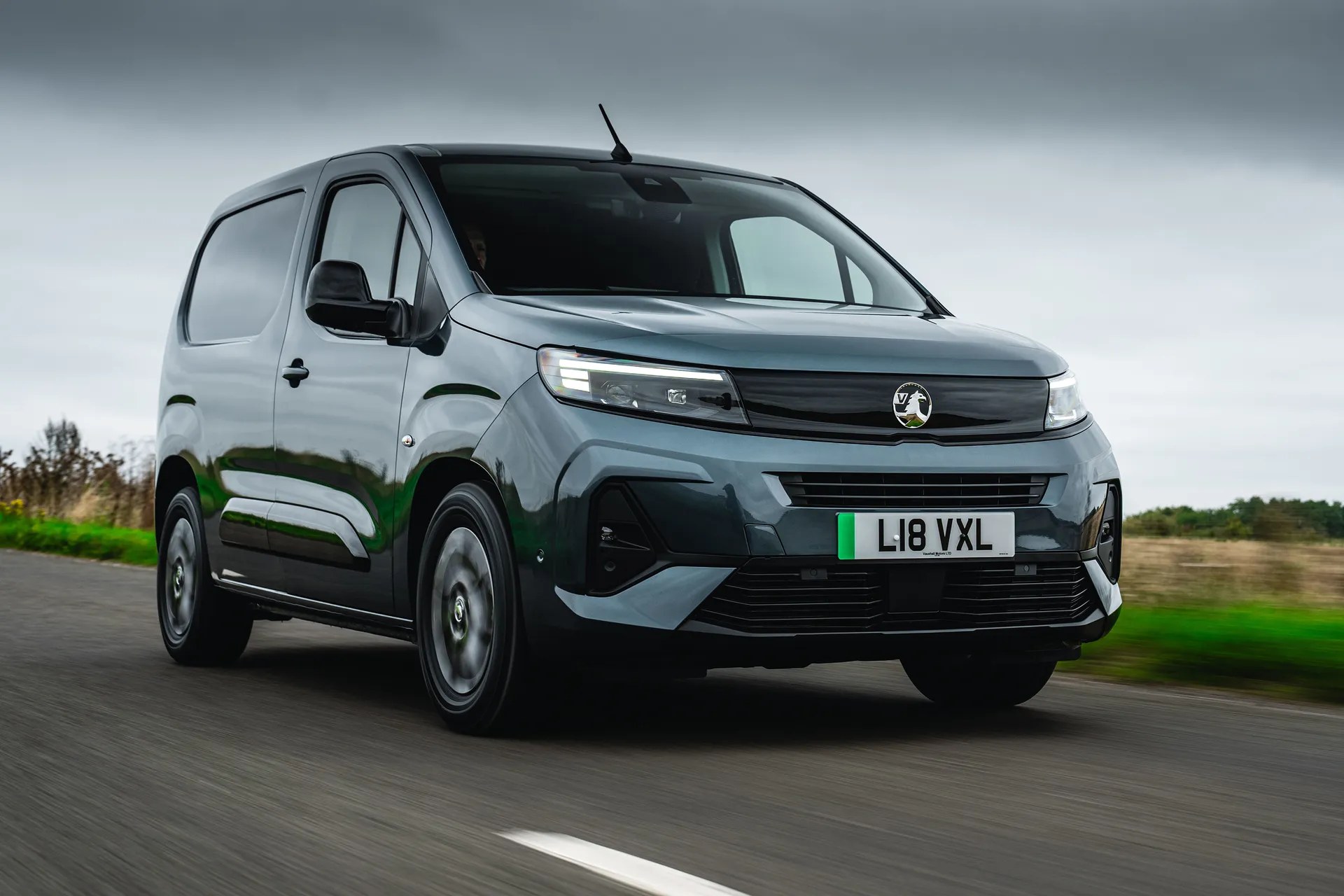
It’s a slightly different ballpark with the all-electric version. These start at around £30,000, rising to around £33,000 depending on body style and trim level. However, if you qualify for the Government’s Plug-in Van Grant, then the price drops by up to £2,500 to bring prices a little closer to those of the diesel models.
However, prices absolutely tumble if you look at the used market. Browse the heycar classifieds, and if you’re happy to settle for a pre-facelift version with a few years and a few miles behind it, then just seven grand is enough to bag you the most affordable examples. These will likely be lower-powered diesel versions of around four years old with around 60,000-70,0000 miles on the clock.
If you want an electric one, you’ll be looking at at least £15,000 or £16,000, but many of the ones available at that money are fairly young pre-registered examples with barely any mileage (we’re talking double-digits here in most cases), so will be as good as new.
Trim levels and standard equipment
If you settle for the entry-level Prime version of the Combo, then your list of standard kit will include air-conditioning, cruise control, electrically adjusting and heated door mirrors, electric windows, rear parking sensors, automatic high-beam headlights, and remote locking.
Probably the biggest reasons to upgrade to the Pro trim level will be the stuff we talked about earlier, namely the significantly better infotainment system and the funky folding passenger seat with a through-loading hatch that significantly boosts the Combo’s cargo volume. However, the upgrade also earns you smarter exterior styling, Matrix LED headlights, front fog lights, power folding door mirrors, rain-sensing wipers, a 180-degree rear parking camera and a digital rearview mirror (this last item shows a live feed from a rear-mounted, rear-facing camera).
Ask the heycar experts: common questions
Is the Vauxhall Combo a car or a van?
Is the Vauxhall Combo any good?
What’s the difference between the Vauxhall Combo, Peugeot Partner, Citroen Berlingo, and Fiat Doblo?
Get our latest advice, news and offers
Keep me updated by email with the latest advice, news and offers from heycar.
By submitting you agree to our privacy policy
